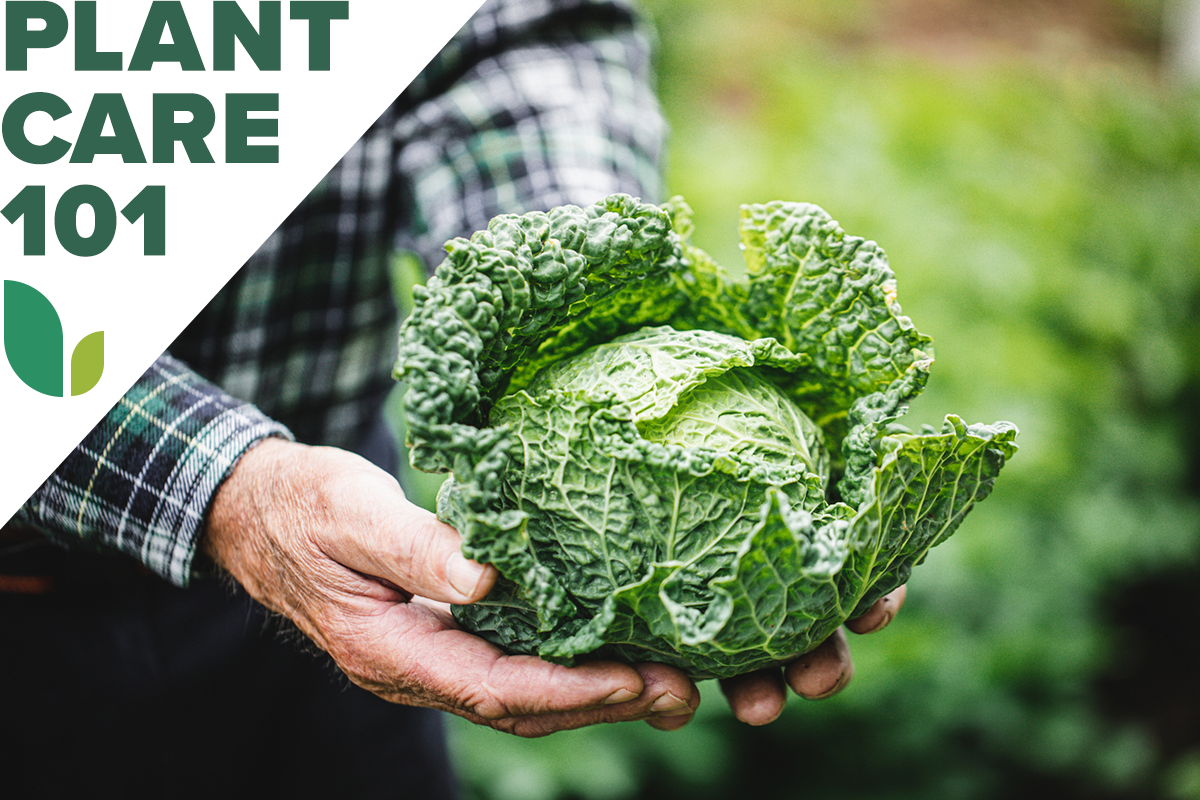We may earn revenue from the products available on this page and participate in affiliate programs. Learn More ›
It’s true that you don’t need a lot of cabbage to purchase cabbage. But, affordable as it is, if you would prefer to grow your cabbage for fresher flavor or homemade and probiotic-rich sauerkraut, remember that the plants like to keep their cool.
Therefore, as The New Sunset Western Garden Book notes, you should “time plantings so that heads form before or after summer heat.” One option in the how to grow cabbage playbook is to sow it in early spring for an early summer crop. Another is to sow it in summer for use as a fall vegetable.
Growing Cabbage at a Glance
Common Name: Cabbage
Scientific Name: Brassica oleracea (Capitata Group)
Hardiness Zone: 6-11
Soil: Moist, well-drained
Light: Full to partial sun
Water: Medium
Food: High-nitrogen organic fertilizer
Propagation: Seed
Safety: Edible but can cause indigestion
Cabbage Characteristics
Actually biennials, hardy in USDA Zones 6 through 11, cabbages generally are grown as annuals instead. A good companion plant for beets and onions, they usually don’t surpass 2 feet in height with green, red, or purple leaves and heads ranging from 2 to 25 pounds. For ‘hardheaded’ types, that foliage is smooth and waxy. However, the “soft headed” savoy types are frillier.
If kept cold for too long in spring or too hot later, cabbage seedlings may bolt and produce flowers rather than heads during their first year. After harvest, if left in the garden over winter, cabbages make stalks of four-petalled yellow flowers in their second year. Mature cabbage vegetable plants reportedly will survive temperatures down to 25 degrees, so light frosts shouldn’t hurt them. However, heavy freezes may harm the heads’ most tender interior leaves.
Recommended Cabbage Varieties
- ‘Charleston Wakefield’: This early and heat-tolerant heirloom variety produces conical 4 to 6 pound heads in about 70 days.
- ‘Copenhagen Market’: This early sweet variety, also an heirloom, makes round 3 to 4 pound heads in as little as 65 days.
- Late Flat Dutch: This late, large heirloom produces flatter, 10- to 25-pound heads in 100 days.
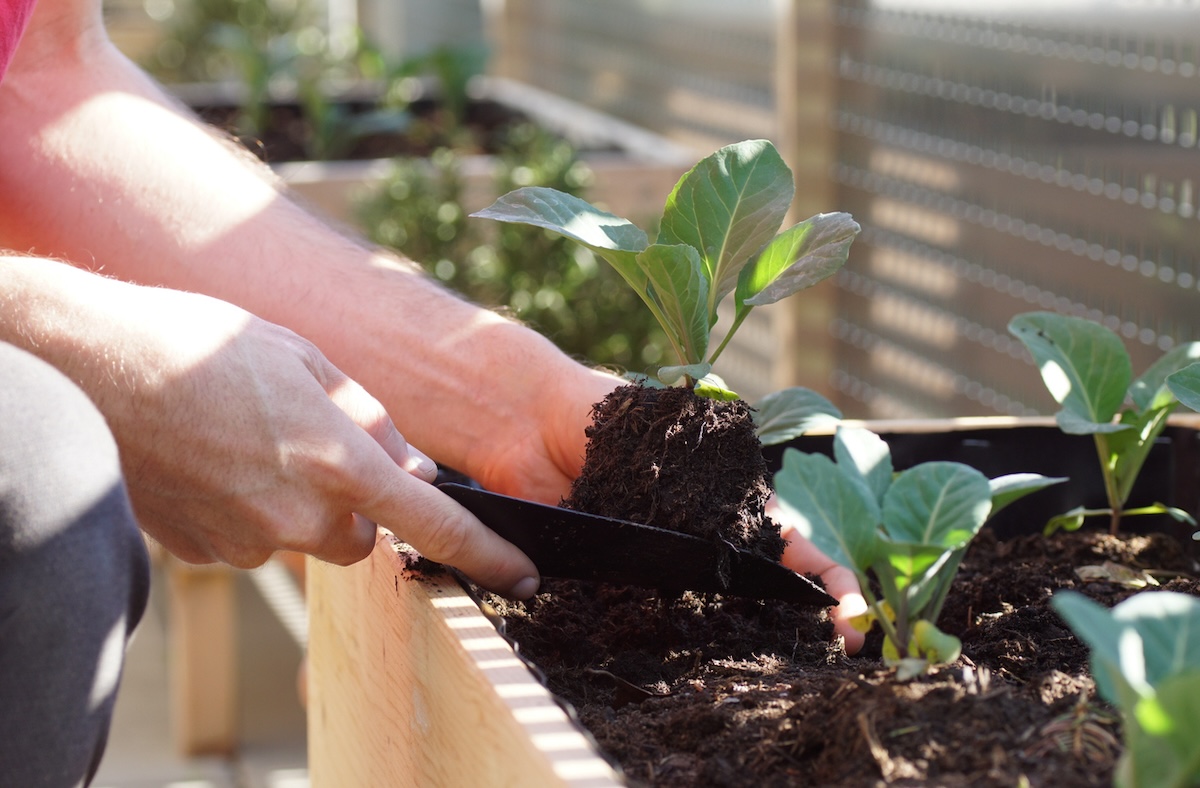
Planting Cabbage
When planning cabbage planting, keep in mind that early varieties mature about 2 months after their transplanting while late varieties take three to 4 months.
When is the best time to plant cabbage?
For a summer crop, sow cabbage seeds indoors under a grow light 2 months before your last spring frost date. Then transplant the hardened-off seedlings into your garden 2 weeks before that last frost date. For a fall harvest, sow early varieties directly into a cool spot in your garden in midsummer.
Where can cabbage grow?
When planting cabbage, choose a location with moist but well-drained soil with a pH between 6 and 7 that receives at least 6 hours of sun per day. Some shade will give it the cooler conditions it prefers. If possible, select a spot where other brassicas haven’t grown in the previous 4 years.
How do you plant cabbage?
Cabbage seeds germinate best at 75 degrees, but seedlings should be kept at 60 degrees afterwards.
- Sow cabbage seeds ¼- to ½-inch deep and 3 inches apart in damp seed-starting mix or garden soil.
- Watch for them to sprout in 4 to 7 days.
- Once they have four to six leaves, transplant the cabbage seedlings to stand 1 foot apart for early varieties, 2 feet apart for late types.
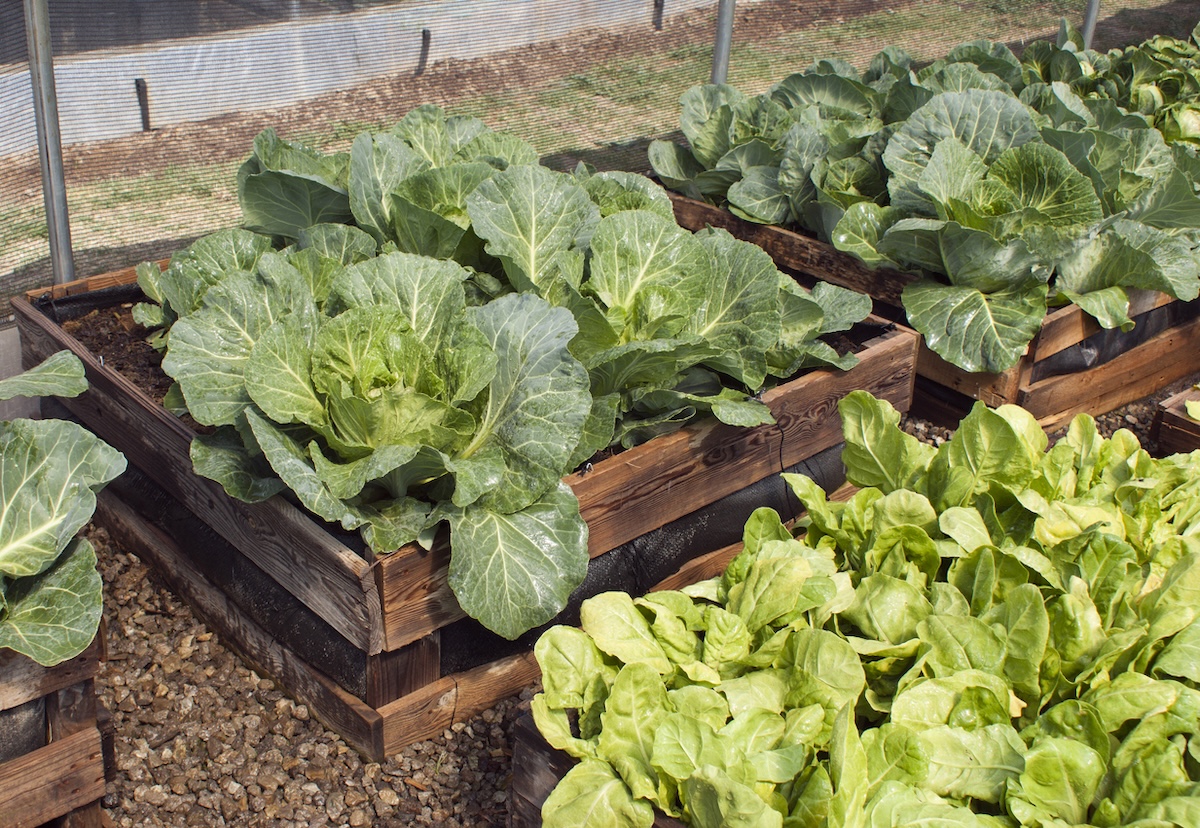
Can you grow cabbage in containers?
Cabbage will grow in containers if you provide at least 5 gallons of soil for each plant in a container that is at least 12 inches deep. For instance, you can grow one plant in a 5-gallon pot, three plants in a 15-gallon tub, etc. Just be sure to keep your containers well-watered in a cool location.
Watering Cabbage
Cabbage should receive at least 1 inch of water per week to keep its soil constantly moist but never soggy. Mulch the plants with organic rather than plastic mulch to help keep their soil damp and their roots cool.
Because excess water near harvest time can cause cabbage heads to split, you may want to stab a shovel blade into the ground on one side of each plant at that time, because severing part of the roots helps limit the amount of water the plant takes up. Just be sure to leave the roots on the other side uncut.
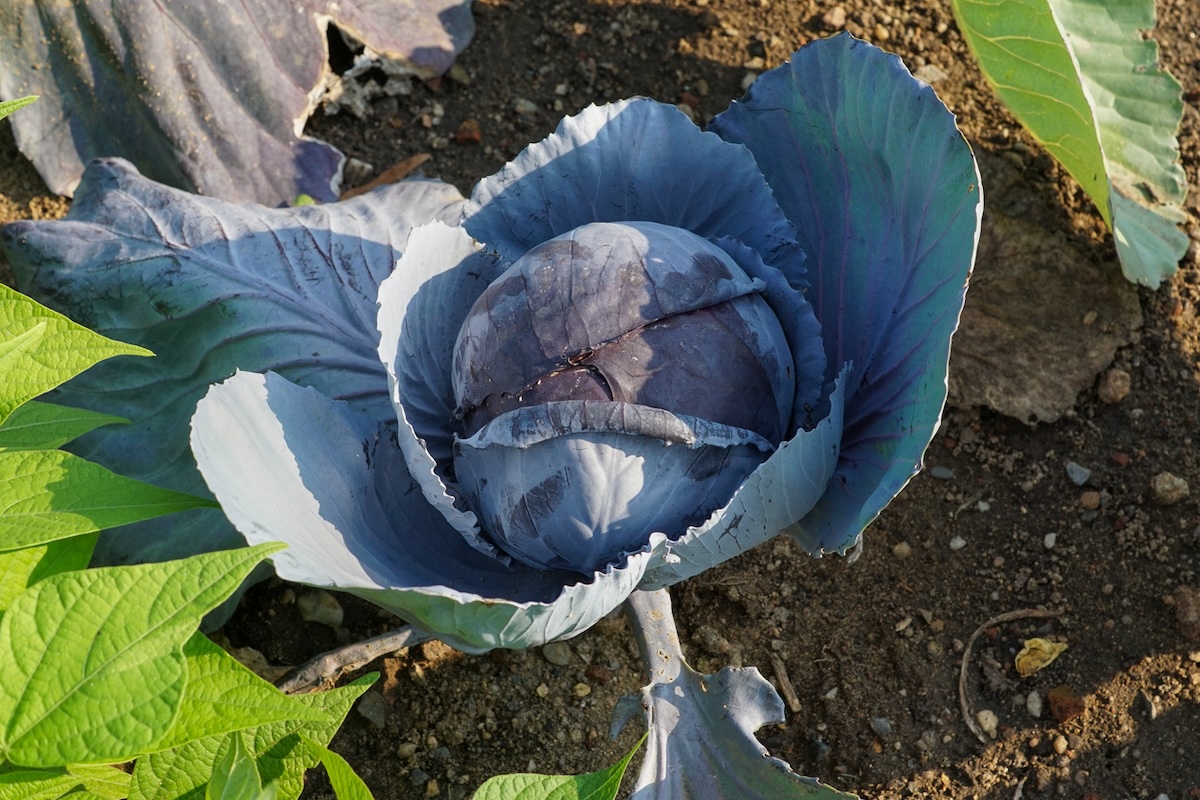
Fertilizing Cabbage
The University of Minnesota Extension recommends that, when growing cabbage, you apply a high nitrogen fertilizer beside your row “when the plants are about 4 inches tall.” One of the suggested formulas is 3½ cups of 10-3-1 bat guano, an organic fertilizer, for each 100 feet of row. Utah State University warns that you should “avoid applying additional nitrogen after heads begin to form. High nitrogen levels at this time cause loose heads and splitting to occur.”
Safety Considerations
Although edible, cabbage can cause indigestion and flatulence in those consuming it. According to Time, “Kale, broccoli, and cabbage are cruciferous vegetables, which contain raffinose—a sugar that remains undigested until bacteria in your gut ferment it, which produces gas and, in turn, makes you bloat.”
But, as Harvard Health Publishing notes, “The foods that give your body beneficial probiotics are those fermented using natural processes and containing probiotics.” Sauerkraut’s inclusion on that list proves that already-fermented cabbage can improve your digestion rather than upsetting it.
Potential Pests and Diseases
One of the best ways to thwart pests such as cabbage worms and flea beetles is to plant your cabbage seedlings where brassicas haven’t grown recently and to cover those seedlings immediately after transplanting with light-admitting row cover. You can leave that cover on until the weather begins to heat up in midsummer.
Clubroot, a brassica disease spread by spores, may not just hinder the growth of cabbage but stop it altogether since it can kill young plants and keep more mature ones from producing. Should you purchase cabbage seedlings, don’t set them out if their roots exhibit unnatural swellings.
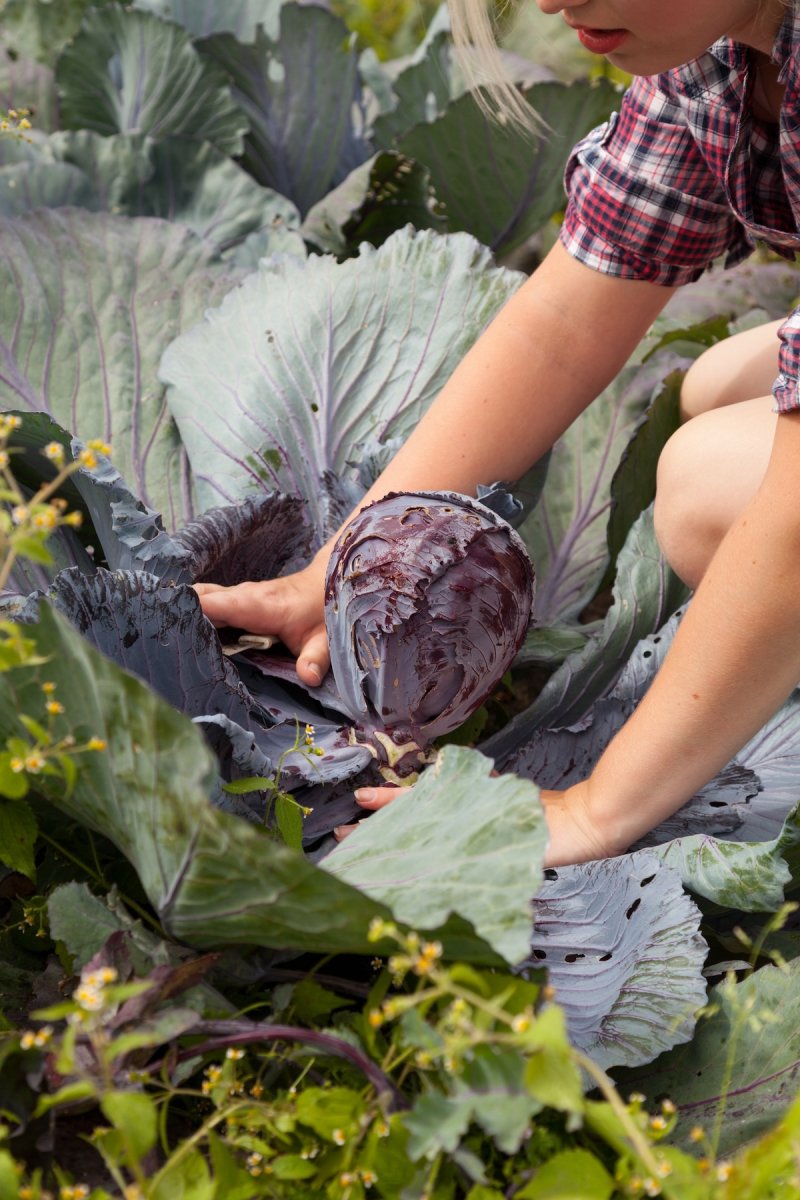
Harvesting Cabbage
When cabbage growing, keep in mind that each plant only produces one head.
When is the best time to harvest cabbage?
Harvest your cabbages once they have reached the size specified for the cultivar and before heavy autumn frosts begin. You can leave the heads on summer plants for a couple weeks after they mature and those on fall plants for up to a month after that maturation date, but don’t wait too long or those heads may begin to split and/or rot.
How do you harvest cabbage?
Cabbage heads should feel firm to the touch when they are ready to be picked.
- When harvesting cabbage, use a sharp knife to cut the stem below each head.
- Leave the outer—protective but sometimes tough and ragged—leaves on the heads until you intend to use the cabbages.
- After you finish harvesting, pull up and dispose of all the plants, as the stumps can harbor pests.
How do you store cabbage?
Avoid washing cabbage until you intend to use it. In the meantime, store it inside a perforated plastic bag in your refrigerator, where it can last for up to 1 month. Among the best vegetables for winter storage, cabbage heads can keep for 3 to 4 months if stored in a root cellar where the humidity is always high.
Looking for more cold tolerant vegetables? Check out our guides on growing beets, broccoli, and spinach.

